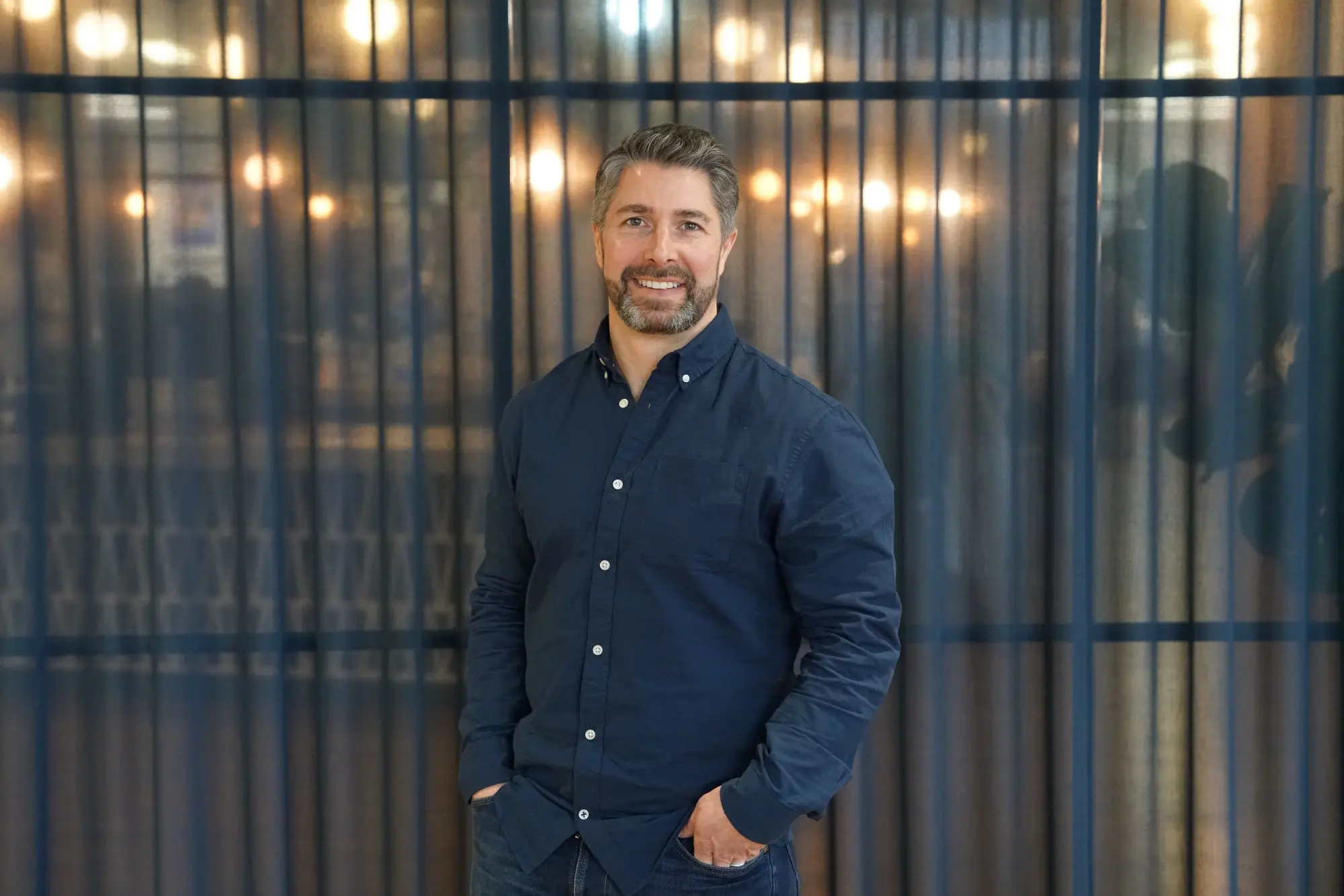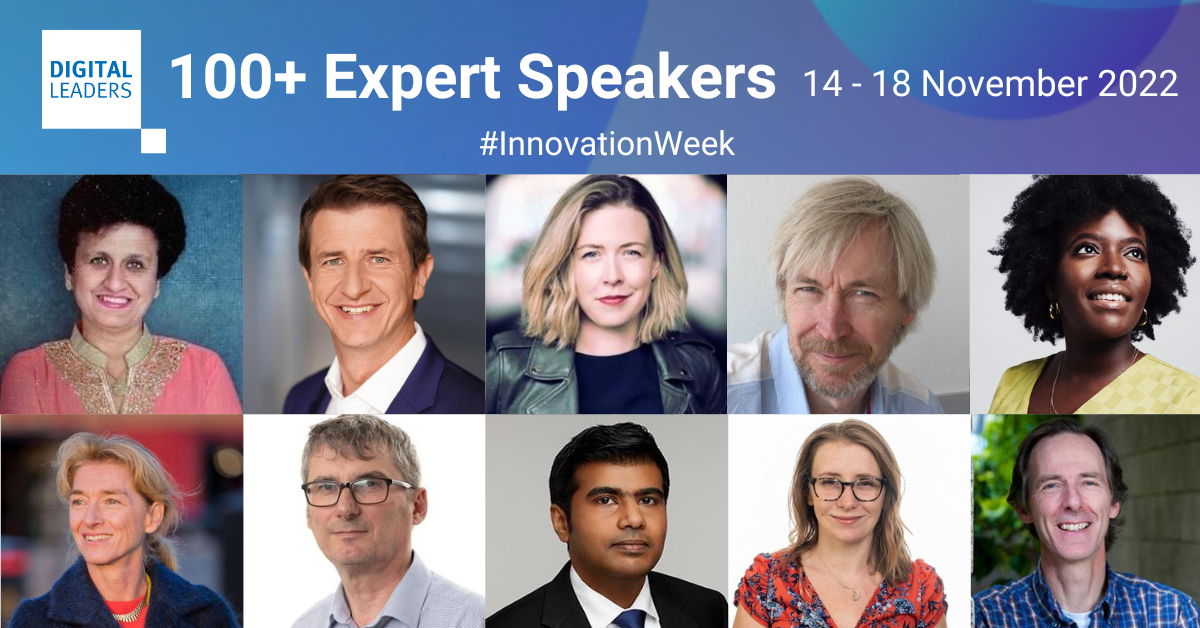Cop26, a conference that became one of the key global events of 2021, once again has brought into focus the importance of reducing our carbon emissions on the way to Net Zero.
We sat down with James Cannings, co-founder of MMT Digital and Chief Sustainability Officer at MSQ Partners, to talk about why businesses should be reducing their digital carbon footprints as part of their overall sustainability strategy, and why digital leaders play the key part in green digital transformation.
Reflecting back on Cop26, last year's conference was focused on the energy, construction, transport and finance sectors. We keep hearing about "green tech", but do you you think more discussion is needed around digital carbon footprints?
Whilst technology has a very important part to play in the battle against climate change, we need to help raise awareness about the huge carbon footprint created by our escalating demands for digital services.
Currently, it's estimated that the Internet has a larger carbon footprint than the airline industry, and it's rising rapidly. We need to understand the carbon benefits that digital transformation can bring, but we also need to be cautious about the carbon footprint of the digital solutions themselves.
WHAT SHOULD BUSINESSES INVEST IN REDUCING THEIR DIGITAL CARBON FOOTPRINT AND BUILD LOW-CARBON DIGITAL SOLUTIONS?
It’s important to recognise that, for most businesses, the digital carbon footprint is likely to be only a small percentage of their company’s overall carbon footprint. Decarbonising digital infrastructure is not necessarily a priority in the same sense as switching to renewable energy, choosing EV or focusing on a low-carbon supply chain. However, there are four major reasons why companies need to invest in minimising their digital carbon emissions today:
The win / win optimisation - Amazon 1-click orders changed perceptions of a fast, simple user experience. The company also led the way in awareness around the importance of fast, lightweight web pages and the substantial increase in revenue accelerated by only a 0.1 second faster page loading speed. Additionally, these solutions turned out to have a massive impact on Amazon’s digital carbon footprint. Less data travelling from a data centre, across the world’s networks and onto your devices means less carbon emissions.
Thinking about "Green Mode" - I often pose the question: “Why doesn’t Netflix have a green mode?” You can insert any streaming service or video conference technology into this example. Do we really need to stream a video at the highest possible resolution? As a consumer, I’d like to have a choice of a green mode, because it matters to me how much carbon I’ve saved each month. The green solutions matter to a more and more people, and all brands will have to think about their own green mode soon. How does your digital service benefit the offline world in terms of sustainability? Can you start thinking about that as part of offline and online customer interactions with your brand? How could you measure and tell your customers about how much carbon they’ve saved by using your product?
Your customers can measure your digital footprint - Today, consumers can measure your website carbon emissions using tools like Website Carbon. Whilst the algorithms and accuracy of these tools need to be understood in more detail, it can be undermining for any brand that invests in environmental sustainability, if their customers are forced to use a high-carbon digital platform. Even if the relative numbers are small, it can be damaging for your brand.
We all need to do our part - Whilst the digital footprint is likely to be a small part of the company’s overall footprint, the accumulative effect is high. When 4.5 billion people who have access to the Internet and make trillions of interactions every minute, we end up with an enormous digital carbon footprint. However, as more brands lead the way in sustainability and awareness increases, there are some simple ways in which we can mitigate the rise of this huge environmental damage.
WHAT DO MSQ AGENCIES HAVE TO OFFER FOR BUSINESSES THAT HAVE DECIDED TO DECARBONISE DIGITALLY?
MSQ Partners are focused on becoming world-leaders in low-carbon digital marketing and digital transformation. Our agencies already have several digital sustainability services on offer. For example, MMT Digital’s Digital Sustainability Audit is a brilliant service designed to help companies identify digital decarbonisation opportunities as part of their digital transformation. Stein IAS, a B2B marketing agency, have a carbon neutral marketing offering. Holmes and Marchant offer a sustainable packaging design service. In addition to that, we’ve already started looking at what environmental sustainability might look like for services like data and market intelligence.
Our 12-month goal is to ensure that every single one of the MSQ agencies has an environmentally sustainable service offering in their portfolio, but also have their best practices in place to ensure they operate as environmentally sustainable businesses. Alongside our own Science Based Reduction Targets, we’re keen to ensure that our clients are working with a low-carbon supplier, which is important for their own reduction strategies.
IF YOU WERE TO GIVE ONE PIECE OF ADVICE TO ALL ENVIRONMENTALLY MINDED DIGITAL LEADERS OUT THERE, WHAT WOULD IT BE?
I tend to talk to teams about the three layers that they can start to think about when it comes to digital footprints:
Measure and reduce - There are various tools available to help you measure a digital footprint. It’s fairly simple for websites, but it can be a little more complex for apps, digital advertising and media, data & insight projects. That said, it’s certainly possible to get an estimation across all of the devices and activities. Don’t get discouraged, if you can’t find any quick wins. Where you can’t reduce your emissions immediately, you can start by using avoidance offsets, tree planting or even permanent carbon capture to mitigate the impact.
An offline benefit - Think about how your digital solution compares to an offline one. For example, you can easily demonstrate the environmental benefits of an online shopping platform, if you can measure the average emissions for an online order versus a physical trip to a store. Again, if you compare the figures and tell your customers about how much carbon they can save by using your digital solution, you’re influencing their buying decision and generating demand for your product.
Changing the UX in real-time - It’s possible to access the “grid emission factors” that tell you how much energy is being supplied onto the national grid from renewable sources in real time. The smart air-con systems can shut off for short periods of time when there is very little energy being produced from renewables. That’s quite advanced, but perhaps your teams could think of an equivalent of this green tech solution and enhance your own brand’s digital green mode. It can be as simple as a website switching to ‘dark mode’ and not serving up high-resolution images by default.
Finally, although we’re working hard to ensure MSQ are able to work in these areas with our own customers, we are helping to raise awareness for other digital teams and recently launched The Green Pages. This is a low-carbon website that contains a curated list of tools for any digital team to help them measure and build lower carbon digital solutions. And we’ve got even grander plans to help setup global standards in this area over the next year or two.
James Cannings co-founded MMT Digital in 1999 and has since grown it to be one of the UKs leading digital agencies with over 200 employees and offices in the Midlands, London and Leeds.
In 2019 James took the company carbon negative, offsetting far more carbon than they produce and aiming to half their carbon footprint over the next 4 years. As the co-chair of the BIMA Sustainability Council, he now runs a training course for other companies on how to model and reduce their carbon footprints using the tools and processes he developed and that are now available via the website that supports his initiative (netcarbonnegative.co.uk).
In 2020 MMT Digital became part of MSQ Group and James helped them to became carbon negative across their entire global operations. James is now the group’s Chief Sustainability Officer and is leading the carbon reduction strategy. Through his low-carbon website, The Green Pages, developed with the BIMA Sustainability Council, he also supports teams in how to build low-carbon digital solutions.









